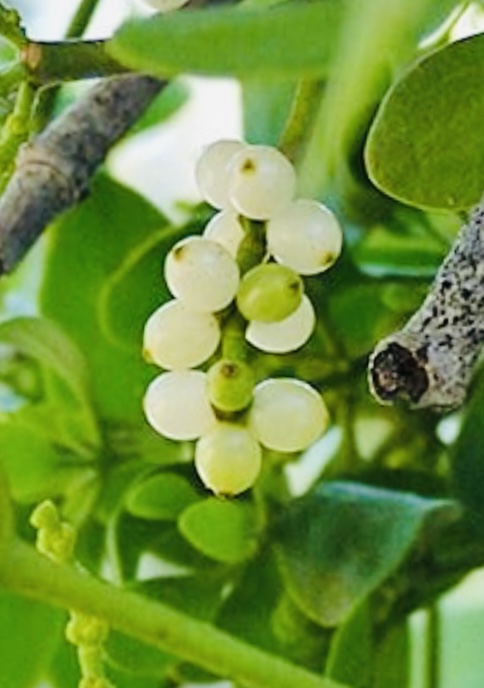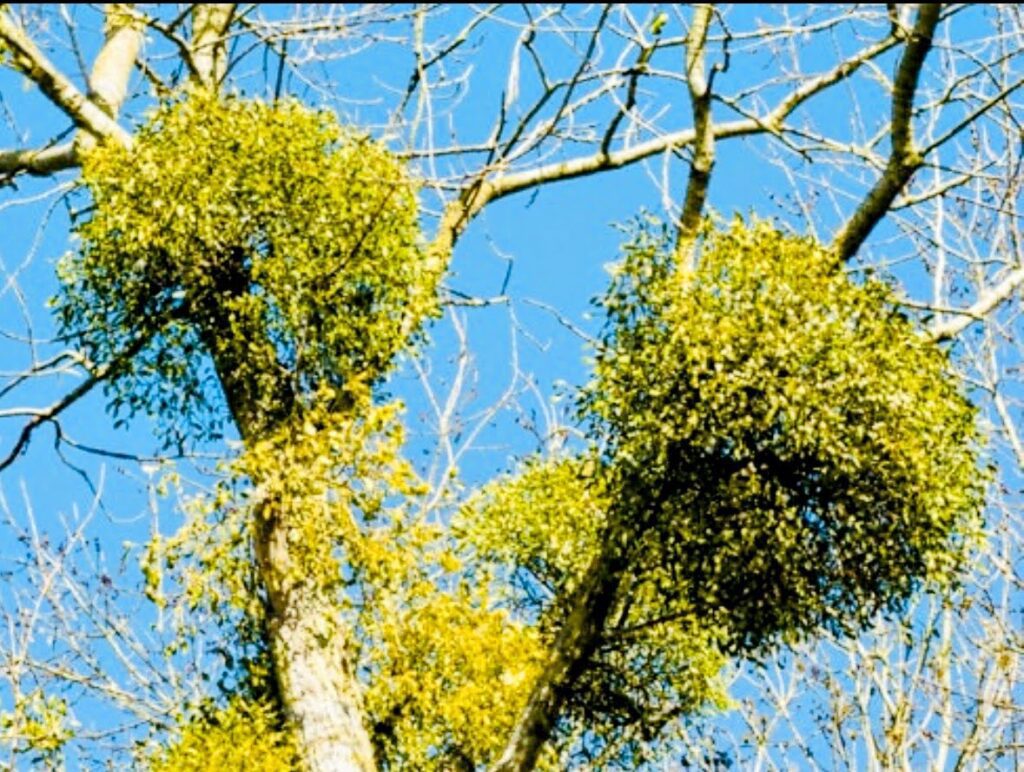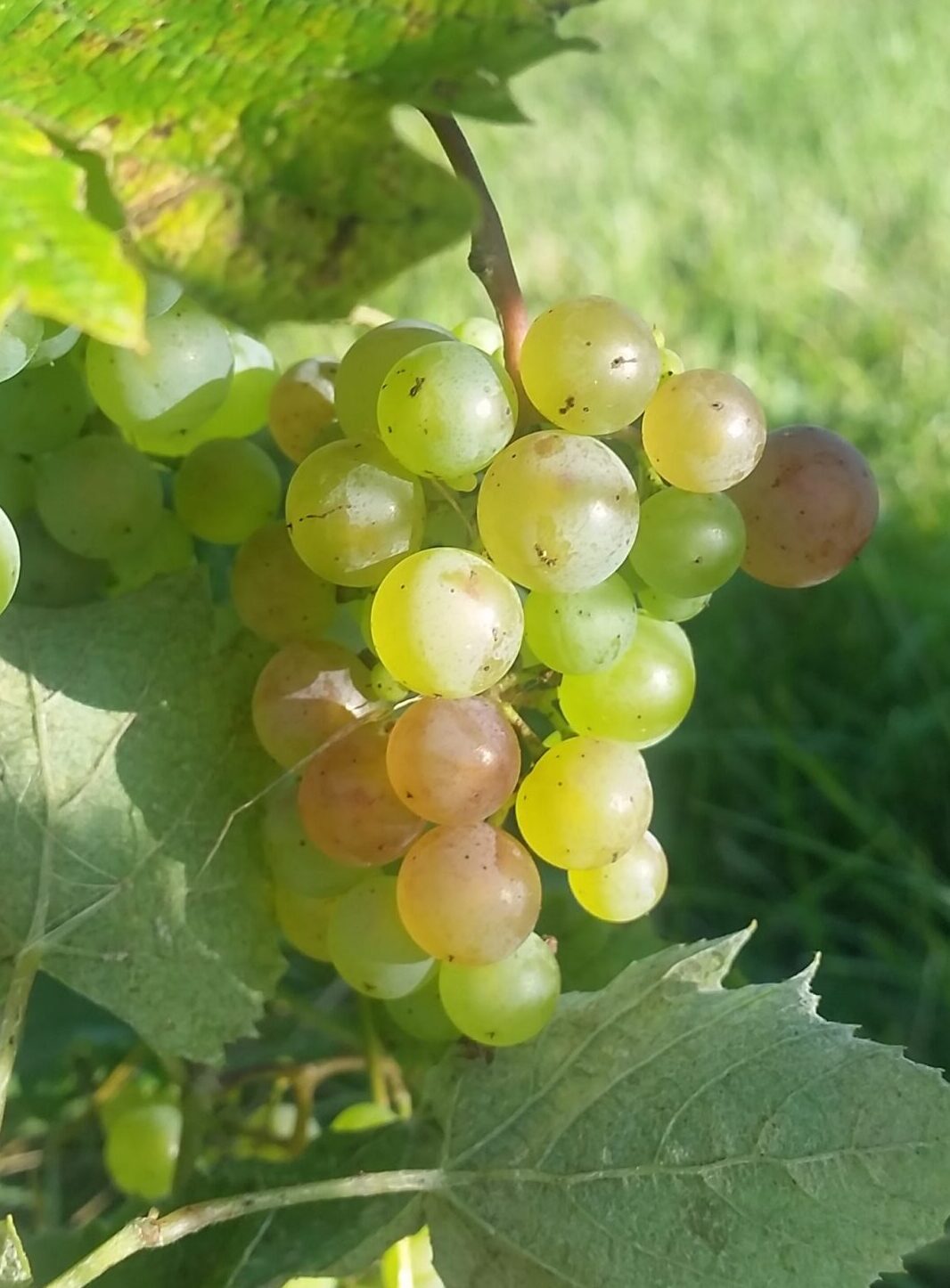Mistletoe is a plant often associated with renewal due to its evergreen nature. During the holiday season, it’s commonly known for its power to encourage kisses. However, mistletoe has a more profound significance beyond this, as it plays a crucial role in the ecosystem. It serves as a source of nourishment, shelter, and nesting grounds for various creatures such as birds, butterflies, and insects. Additionally, mistletoe may provide critical value for humans as well.

American mistletoe fruit and flowers
Mistletoe is a plant with more than 1,300 species worldwide. The U.S. has two types – American and dwarf mistletoe. The American one is found throughout the country, while the dwarf one is smaller and found from central Canada to Honduras.
Mistletoe has been a part of our forests for over thousands of years, and even fossil pollen grains indicate that the plant has been here for thousands of years. USGS researcher Todd Esque states they are a natural component of healthy forest ecosystems.
All mistletoes share a common trait – they grow as parasites on the branches of trees and shrubs. The American mistletoe is known as Phoradendron in scientific terms; it means “thief of the tree” in Greek. This name is fitting since the plant starts as a sticky seed that often hitches a ride to a new host tree on a bird’s beak or feather or a mammal’s fur.
The dwarf mistletoe seeds explode from ripe berries; these seeds can travel as far as 50 feet, allowing the sticky mistletoe to find a new carrier like birds, animals, or a new host. The dwarf mistletoes typically parasitize conifers at high elevations, and in desert areas, mistletoes prefer legume trees.
Mistletoes are plants that grow on a variety of trees. They are not true parasites because they have green leaves that allow them to carry out photosynthesis. However, mistletoes send out roots that penetrate the host tree and embezzle its nutrients and minerals for sustenance. Over time, mistletoes grow into thick masses of misshapen stems and branch out in various directions, earning them the nickname of “witches’ brooms” or “basket on high” among the Navajo people.

Mistletoe’s name comes from the Anglo-Saxon words for “dung-on-a-twig” because it often grows where birds leave their droppings. Although bird droppings don’t create mistletoe, birds play an essential role in its life cycle and rely on it for survival.
USGS researchers studied the relationship between mistletoes and birds in Arizona. Phainopeplas is a silky flycatcher prominent in Southwestern and western states, including Arizona. Mistletoe is crucial for birds’ food and seed dispersion. It provides sustenance and insect nutrients during winter, helping birds and plants. Mistletoe berry production affects the following spring’s bird breeding.
Many birds eat mistletoe berries, including the grouse, mourning doves, bluebirds, evening grosbeaks, robins, and pigeons. Birds find mistletoe an excellent nest place, especially the witches’ brooms. Raptors like Northern and Mexican spotted owls, Cooper’s, goshawks, and sharp-shinned hawks use witches’ brooms as nesting sites. Other migratory birds also nest in witches’ broom.
Mistletoe is crucial for the survival of three kinds of butterflies in the United States: the great purple hairstreak, the thicket hairstreak, and the Johnson hairstreak. The great purple hairstreak butterfly feeds on American mistletoe and lays eggs on the plant. The resulting caterpillars thrive on a mistletoe diet. Honeybees and other native bees rely on mistletoe as an essential nectar and pollen plant. Mistletoe flowers are often the first pollen available in the spring for bees. Insects like flies, ants, and beetles are crucial pollinators for mistletoe. Some insects feed exclusively on the plant, including a twig beetle and several thrip species.
Mistletoe is toxic to people, but animals like elk, cattle, and deer eat it during winters when fresh foliage is rare. Other mammals that eat mistletoe include squirrels, chipmunks, and even porcupines. Various squirrels often use witches’ brooms for cover and nesting sites.
Mistletoe is a native plant that has been around for a long time. Ecologists believe mistletoe is not a disease but a natural component of healthy forest ecosystems. It spreads only about 2 feet per year and takes several decades to affect the death of an individual tree. While commercial foresters consider mistletoe a disease, it has many positive attributes, including benefits for native wildlife.
In Norse culture, the mistletoe plant symbolizes love and peace. According to one story, the goddess Figg lost her son, Baldur, to an arrow made of mistletoe. After his death, she vowed that mistletoe would kiss anyone who passed beneath it as long as it was never again used as a weapon.
Historically, mistletoe represents romance, fertility, and vitality. The Celtic Druids valued mistletoe for its healing properties and likely were among the first to decorate with it.
2 Corinthians5:7 “For we live by faith, not by sight,”

